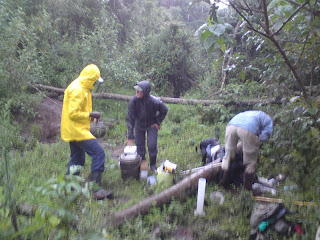We are overwhelmed with gratitude at the graciousness and hospitality of the managers and staff at
Governor's Camp. This is one of the most beautiful and highest rated lodges in the Masai Mara and they opened their doors to us, simple researchers with an old Land Rover, in our time of need.
One of our research sites is just downstream of Governor's Camp. We have been studying that site since we arrived in Kenya last year. While driving away from that site last week, our vehicle began suffering from a damaged oil seal. Oil was trickling down from our timing belt cover. Governor's Camp was the closest place of refuge so we began driving for them so we wouldn't be stranded in the middle of the reserve. Upon our arrival, their workshop staff welcomed us and began giving aid. They were able to repair our vehicle and give us excellent advice on other mechanical issues we have been having with the vehicle.
Not only did they assist us with our vehicle, they also assisted us scientifically. They were able to provide us with 9 years of daily rainfall data for the Masai Mara. They also expressed great interest in our research so we were able to provide them with data and advice on their water supply and sanitation system.
Governor's Camp, we are extremely grateful. Thank you.

















































